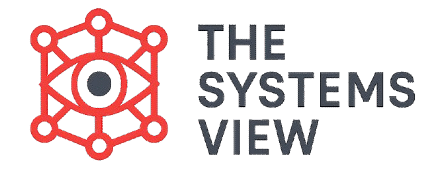Have you ever tried to understand a complicated machine by taking it apart? That’s what science has done for hundreds of years. This method is called reductionism, and it’s how we learned a lot about the world.
But when you break something apart, you often lose the most important thing: how the pieces work together. General Systems Theory (GST) argues that to truly understand complex things—like a human body, a forest, or a business—you must use holism. This article explains the difference between these two ways of looking at the world and shows why holism is essential for systems thinkers.
Reductionism: Breaking Down the System
Reductionism is the traditional and successful approach of modern science. Its main idea is simple: to understand a complex thing, you must break it down into its smallest, simplest parts.
The Method of Separation
A scientist using reductionism believes that if they can fully explain the behavior of the smallest parts, they can explain the behavior of the whole. For example, a biologist might study a living cell by breaking it down into its molecules and chemical compounds. An economist might study a global market by breaking it down into individual consumer choices.
The goal is to find the fundamental building blocks of reality. This method has worked very well for discovering basic laws of physics and chemistry.
The Limitations of Reductionism
The problem with reductionism is that it often misses the most important features of a complex system. These missed features are called emergent properties.
- Emergent Property: This is a characteristic of the whole system that is not present in any of its parts. For example, a car’s engine parts (pistons, cylinders) cannot “drive.” The property of “driving” only emerges when all the parts are connected and working together.
- Loss of Context: When you study the parts separately, you lose the context of their relationships. The relationships between the parts are often more important than the parts themselves.
Reductionism is the method of understanding a system by breaking it down into its smallest, fundamental parts. While successful in basic science, it often fails to explain “emergent properties,” which are the new characteristics that only appear when all the system’s parts are connected and working together.
Holism: The Power of the Whole
Holism is the central philosophical idea behind General Systems Theory. The word comes from the Greek word holos, meaning “whole” or “entire.”
The System is Greater than the Sum
The core statement of holism is that the whole is greater than the sum of its parts. This means that when you connect parts into an organized system, you create new qualities and behaviors that you couldn’t have predicted just by studying the parts alone.
- Focus on Relationships: Holism forces the thinker to look at the relationships and interactions between the parts, not just the parts themselves. In a family system, the relationship between a parent and child is more important than the study of either person alone.
- Focus on Organization: Systems thinkers using holism focus on the organization of the system. It is the arrangement and connection of the parts that defines the system, not the components.
The GST Challenge
The founders of GST, like Ludwig von Bertalanffy, argued that science needed to be more holistic, especially when studying living systems. Life, they argued, is full of emergent properties—like consciousness, growth, and self-organization—that cannot be reduced to simple chemistry. Holism became the philosophical foundation for all of systems thinking.
Two Ways to Look at the Systems
To be a systems thinker is to practice holism. It means choosing to look at the overall pattern and function first, instead of immediately focusing on the isolated pieces.
System Boundaries
Both approaches require the thinker to draw a boundary around the subject they are studying.
- A Reductionist draws the boundary around the smallest particle (e.g., one molecule).
- A Holist draws the boundary around the entire functioning unit (e.g., the entire human body or the entire company).
The decision about where to draw the boundary is the first and most critical step in systems analysis.
Practical Application
In a practical sense, systems thinking uses both. A holistic view is needed to identify the system and understand its overall purpose. Then, a reductionist view can be used temporarily to analyze a specific component problem. The key, however, is always to bring that knowledge back into the context of the whole system.
Conclusion
Reductionism is the powerful scientific tool that breaks systems down into their simplest elements. Holism is the essential philosophy of General Systems Theory that insists on looking at the whole system to capture its unique properties and organized relationships. To truly understand complex systems — from ecosystems to social organizations — a thinker must move beyond breaking things apart and fully adopt the holistic view that the whole is truly greater than the sum of its parts.



